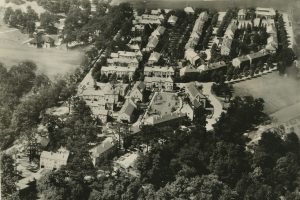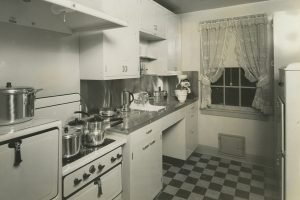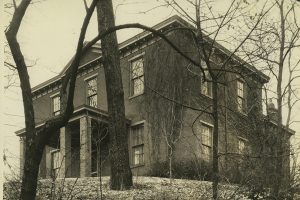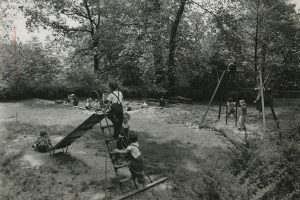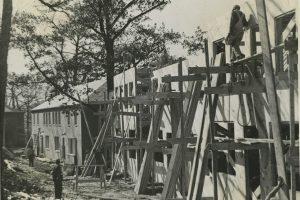Buhl Foundation's Chatham Village Photographs
The Buhl Foundation Photographs contain photographs of homes in Chatham Village, the Buhl Foundation’s $2 million housing development located in Pittsburgh’s Mt. Washington neighborhood. The photographs, dating from 1929 to 1950, include images of Chatham Village’s construction, the interiors and exteriors of homes, Chatham Hall (the community center), recreational areas, and the development’s residents.
Completed in 1936, Chatham Village offered residents attractive and affordable rental units. It gave families the opportunity to “ride out” the Depression until the economy improved and is still considered a model for many housing projects throughout the country. The community’s Board of Managers favored a long-term rental policy over ownership because of the volatile economy of the day. The Foundation maintained Chatham Village as rental property until 1960 when it was turned into cooperative housing and sold to owner occupants. It was added to the National Register of Historic Places in 1999 and a National Historic Landmark plaque was installed in 2005. It remains a cooperative housing community today.
Nationally-renowned city planners Clarence Stein and Henry Wright, with the help of local architect Frederick Biggers, designed the garden community in the 1930s. Landscape architect Ralph Griswold implemented ground work and local architecture firm Ingham & Boyd designed and constructed buildings out of brick, limestone, and slate. The model homes were furnished by the Boggs and Buhl department store. Chatham Village occupies 45 acres of land and consists of 197 townhomes, 19 apartments, private recreational facilities, parks, and woodlands.
About The Buhl Foundation
The Buhl Foundation is one of Pittsburgh’s largest foundations, providing grants primarily to Pittsburgh’s educational and cultural organizations. The Buhl Foundation was formed by Henry Buhl, Jr. at his death in 1927 as stipulated in his will. Buhl was sole owner of Boggs and Buhl department store, located in Pittsburgh’s North Side neighborhood, and he wanted to leave something to the city of Pittsburgh in honor of his deceased wife Louise.
The Buhl Foundation officially began operation on June 1, 1928 with Charles F. Lewis as director and Robert S. Frazer, William S. Linderman, Arthur Braun and Andrew Robertson as board members. In its first year, the Foundation distributed $646,256.75 for ten separate activities or programs in fields of economics, education, recreation and social research. The first grant given by the Foundation was $3687.75 to the Pennsylvania State Crime Commission to finance a study of the minor courts in Allegheny County. Two significant grants given during the first year included $250,000 to the University of Pittsburgh to develop its Bureau of Business Research program and money to the employees of Boggs and Buhl to establish a pension fund for them. Other grants and projects funded by the foundation since then include Buhl Planetarium, the Children’s Museum, the Pittsburgh Foundation, and various research endeavors in the fields of science, technology, and sociology.
Collection Highlights
